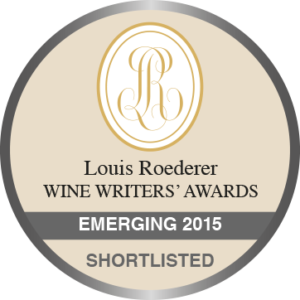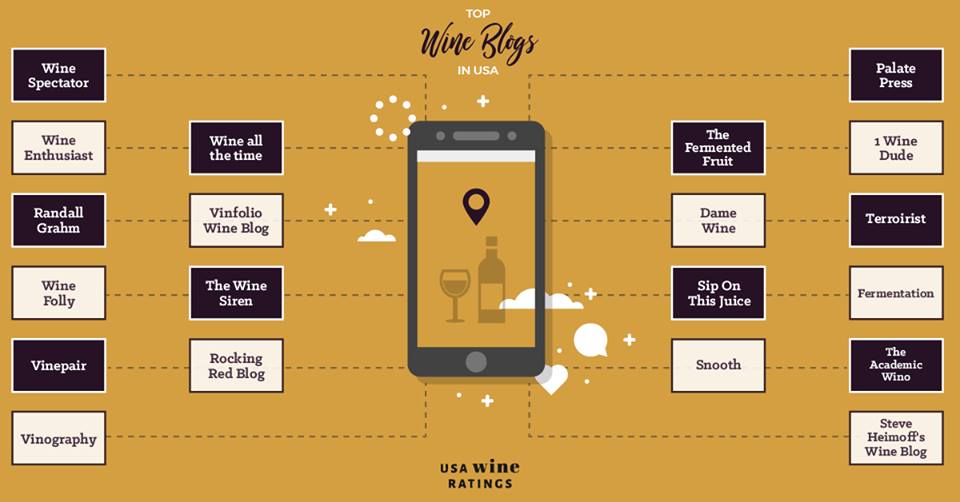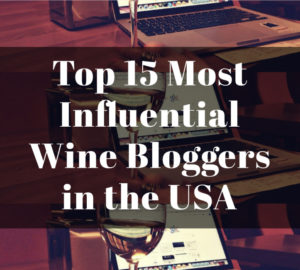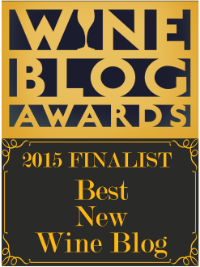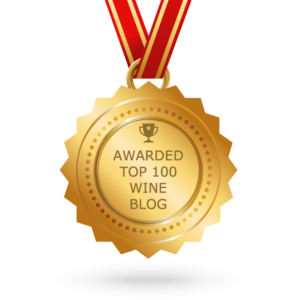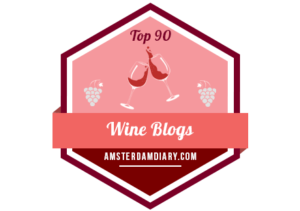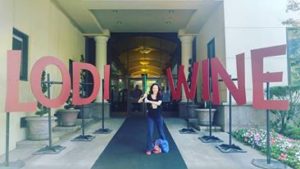 Many can, and have, argued that you are able to truly know the wines of a certain place just by drinking them all the time. I think that is true to a certain extent, but there are places lacking a prestigious reputation, even though they make wines that are worthy of prestigious praise, and so, we may never experience the best, or at least, all that a particular place has to offer in the world of wine. And so, sometimes we make unfair generalizations of a wine producing area’s potential for quality, when in fact we are completely ignorant of their aptitude for great wine. That can even affect us trusting our own palate, causing us to give a wine the thumbs down with stereotypical snide comments for no reason.
Many can, and have, argued that you are able to truly know the wines of a certain place just by drinking them all the time. I think that is true to a certain extent, but there are places lacking a prestigious reputation, even though they make wines that are worthy of prestigious praise, and so, we may never experience the best, or at least, all that a particular place has to offer in the world of wine. And so, sometimes we make unfair generalizations of a wine producing area’s potential for quality, when in fact we are completely ignorant of their aptitude for great wine. That can even affect us trusting our own palate, causing us to give a wine the thumbs down with stereotypical snide comments for no reason.
Lodi
Lodi is a two hour drive from San Francisco, without traffic, but in reality it is probably a longer ride to get there. It is considered the “Zinfandel Capital of the World” but when I visited there a few weeks ago, it seemed that I had tasted more grape varieties than I have ever tasted from one American Viticultural Area (AVA aka appellation). And so, how did such a diverse wine region that is so close to one of the most famous international cities in the world become known for only Zinfandel? And not only that, but one particular style of Zinfandel, especially considering the plethora of styles of Zin that exist in Lodi.
Many of us may associate White Zinfandel, the popular craze that started in the 1970s, in the US, to the general California area, with Lodi being, as well as California at one time, unfairly summed up with one broad paint stroke of making quaffable, entry level wines.
The Paris Wine Tasting in 1976, aka Judgment of Paris, changed the world’s perception of Napa wines. Bank loans that were once denied were enthusiastically given to the struggling wine producers in Napa after they won that competition, and eventually Sonoma benefited from not only a close proximity to Napa, but also a desire to have another AVA with a cooler climate that could make Pinot Noir and more linear Chardonnay wines.
Lodi had struggled for many more decades after Napa’s victory in 1976, and hence they did not have the funds or the reputation to help bring investment into the area until pretty recently. And even though they are making incredibly interesting wines, with some of them being straight out jaw dropping, still their wines are way under valued when you see the prices. I’m talking about having a Lodi Cabernet Sauvignon that is rich, complex, structured and still energetic until the last drop going for 15 bucks…. and if you buy two bottles the price goes down to 12 bucks a bottle. Say what?!
And by the way, I was talking about the Cabernet Sauvignon from Langetwins Winery, if you want to see if you can find it on wine-searcher.com.
Even though these are the cards that they were dealt, it doesn’t mean they have to be content with them.
History of Grape Growing and Wine Making in Lodi
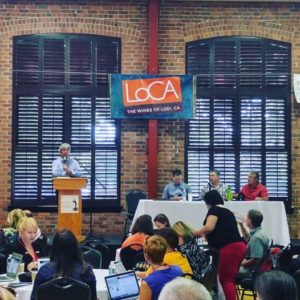 Our first seminar was an ideal one to kick off the Wine Bloggers Conference in Lodi. The Mayor of Lodi, Mark Chandler, and former Executive Director of the Lodi Winegrape Commission (1991-2011) was the moderator. It is telling to see that the Mayor was involved with wine in some way, shape or form; it is telling of how much grape growing and winemaking means to the Lodi community. On the panel there were three wineries represented: Michael-David Winery, Bokisch Vineyards and Langetwins Winery.
Our first seminar was an ideal one to kick off the Wine Bloggers Conference in Lodi. The Mayor of Lodi, Mark Chandler, and former Executive Director of the Lodi Winegrape Commission (1991-2011) was the moderator. It is telling to see that the Mayor was involved with wine in some way, shape or form; it is telling of how much grape growing and winemaking means to the Lodi community. On the panel there were three wineries represented: Michael-David Winery, Bokisch Vineyards and Langetwins Winery.
Michael David Winery
You may have never heard of Michael David Winery, but I bet you have heard of some of their wines such as 7 Deadly Zins or their newest success Freakshow. Kevin Phillips, Vice President of Operations at Michael David Winery, talked about his family’s business starting with his grandfather, a farmer, who grew produce and eventually with Kevin’s father, sold produce at farmers’ markets all over California, as well as neighboring states. They started the produce stands in the 1970s and making wine in the mid 1980s, and their wine was only initially sold directly through their market stand. Through time they would sell most of their grapes to other wineries, since they lacked the infrastructure to sell wine themselves beyond their little market stand in Lodi.
Well, as life has a tendency to direct one where they should be instead of where they think they should be, the Michael David Winery, originally named Phillips Vineyards, was given a nice settlement from Phillips Wine & Spirits in Minnesota during a legal agreement that would have them change their name to something else, and so they used both the first names of Kevin’s dad and uncle, respectively Michael and David.
With that twist of fate, they decided to create brands that would be accessible to wine lovers around the world, and so their first, 7 Deadly Zins, was born. They went from producing 500 cases of this wine in 2000 jumping to 10,000 cases the next year in 2001.
The more fun brands they created using the delicious juice from Lodi, the more their sales grew. In 2015 they sold a total of 650,000 cases and they have 2016 sales projected anywhere from 700,000 to 775,000 cases. They work with many growers in Lodi to fulfill these orders, but what is funny is that even though people may enjoy these wines for their incredible value, as well as their memorable labels, they probably don’t know they are from Lodi. They may not even know about Lodi as a quality wine region.
Brands vs Boutique Wineries
I think many wine nerds like to criticize wine “brands”. Many times we think of them as being created by soulless companies that do not make distinctive wines with a sense of place. Actually, some huge corporations buy family properties, keep the family and original workers, but they update equipment and packaging to help them with consistency and sales. Some big wine companies certainly achieve this better than others. But what is interesting about the Michael David Winery is that it was started by a family of farmers who were given an opportunity to expand, and through creativity, sweat, blood and tears they became a successful wine producer. It is rare to have such success, and now their wines can be found in every state in the union of the US, as well as 33 countries.
And so it was nice to hear about a family who had created successful brands while still owning the whole company as a family. The best brands are inclusive wines that reach out with a warm hello to everyone, no matter their status in life. Conversely, boutique wineries would love to reach out to a wide audience, yet they do not have the resources and so they depend on word of mouth.
Starstruck in Lodi Again
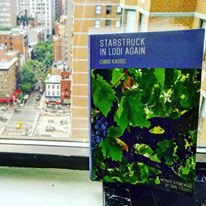 I thought this contrast of brands vs boutique wineries in Lodi was vividly displayed in the new book about Lodi Wine Country called Starstruck in Lodi Again. It is an entertaining, and at times, raw look at this unique area. The author, Chris Kassel, conducted many interviews throughout the Lodi area and in his own words about the intent of the book, “It is a compendium of charismatics, a potpourri of personalities, a variety of viewpoints, and when it comes to success, nobody does it alone.”
I thought this contrast of brands vs boutique wineries in Lodi was vividly displayed in the new book about Lodi Wine Country called Starstruck in Lodi Again. It is an entertaining, and at times, raw look at this unique area. The author, Chris Kassel, conducted many interviews throughout the Lodi area and in his own words about the intent of the book, “It is a compendium of charismatics, a potpourri of personalities, a variety of viewpoints, and when it comes to success, nobody does it alone.”
Kassel talked to David Phillips, one of the owners of Michael David Winery and uncle to the aforementioned Kevin Phillips, and describes him as “down-home cuddly in a salt-of-the-earth –farmer sort of way” and makes the point that he is not an imposing person himself even though his reputation and portfolio certainly seems imposing. Phillips’s exuberance to proclaim Lodi as the greatest place on earth was evident in the chapter devoted to his wine company. And so, even though they are big, they are still Lodi, part of a place, part of a community.
One chapter in the book, a couple of chapters preceding the one about Phillips, focused on a tiny, niche winery with a winemaker from Switzerland who did not get into wine until he was thirty. I actually sat at a table during the Wine Bloggers Conference gala dinner with this winemaker, Markus Niggli, who talked over dinner about the warm welcome he felt from Lodi as a foreigner.
 Well, I was curious to taste his wines, how “atypical” could they be for a region that makes such oddities as 100% Touriga Nacional, and so I thought he wouldn’t pour anything I hadn’t had before… well, Mr. Niggli served me up with a wine made from Kerner, Gewürztraminer, Riesling and Bacchus grape varieties! It was their 2014 Markus Nimmo which I enjoyed eating with my crow that night. The wine was edgy, yet inviting, with flinty minerality, floral and spicy notes and acidity that made my mouth water yet it was not too fierce or sharp – and all for only 22 American dollars.
Well, I was curious to taste his wines, how “atypical” could they be for a region that makes such oddities as 100% Touriga Nacional, and so I thought he wouldn’t pour anything I hadn’t had before… well, Mr. Niggli served me up with a wine made from Kerner, Gewürztraminer, Riesling and Bacchus grape varieties! It was their 2014 Markus Nimmo which I enjoyed eating with my crow that night. The wine was edgy, yet inviting, with flinty minerality, floral and spicy notes and acidity that made my mouth water yet it was not too fierce or sharp – and all for only 22 American dollars.
The wines that I tasted were perfect examples of why we need tiny little wineries like them. As much as the big boys can deliver the goods that most people want, it is the smaller guys (and girls) who can offer something different for those who are tired of the same old, same old. But since their marketing budgets are almost nonexistent, we have to do a little bit of homework to find them, or at least get lucky enough to have them cross our paths.
Bokisch Vineyards
Okay, so getting back to the panel of the seminar, there was another innovator in Lodi. Markus Bokisch, Owner/CEO/Vigneron at Bokisch Vineyards, whose love for Spain developed from not only ancestral connections, but also from his time there, spent making wine. Their Albariño and Tempranillo wines certainly made many of us take notice. Bokisch started his winery in 2000 and he was the first to bring in varieties from Spain, but keeping the Lodi spirit, they gifted these varieties to the University of California and Foundation of Plant Services to make them available to other producers free of charge.
Langetwins
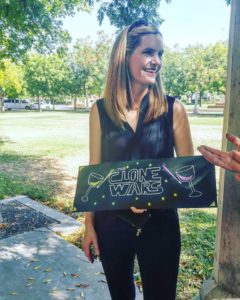 Our final panelist was Aaron Lange, Vineyard Manger of Langetwins Winery and Vice Chair California Association of Winegrape Growers (CAWG), who shared the great story about the owners of Langetwins (his father and uncle) being twins. Fate would have it that I would have the pleasure to meet each of the owners’ daughters when I had dinner there with other wine bloggers. It was funny that I ended up there because I picked the name The Clone Wars, since all the intimate winery dinners were a secret with only a code name to identify the groups, and the clones represented the twins. Many of you probably know I picked it because of my insane love for Star Wars. We had a great dinner at the Langetwins winery and discovered their fantastic 2014 Nero d’Avola, as well as their $12 Cabernet Sauvignon that I mentioned earlier.
Our final panelist was Aaron Lange, Vineyard Manger of Langetwins Winery and Vice Chair California Association of Winegrape Growers (CAWG), who shared the great story about the owners of Langetwins (his father and uncle) being twins. Fate would have it that I would have the pleasure to meet each of the owners’ daughters when I had dinner there with other wine bloggers. It was funny that I ended up there because I picked the name The Clone Wars, since all the intimate winery dinners were a secret with only a code name to identify the groups, and the clones represented the twins. Many of you probably know I picked it because of my insane love for Star Wars. We had a great dinner at the Langetwins winery and discovered their fantastic 2014 Nero d’Avola, as well as their $12 Cabernet Sauvignon that I mentioned earlier.
But again, the love for Lodi, the diversity, the great quality and the commitment to stay together as a community was echoed by Aaron Lange. He spoke about the revolutionary Lodi Rules for Sustainable Winegrowing with passion. It is California’s first third party accredited program. He said that it made Lodi producers all “cousins” in the sense that they are all trying to make high quality wines with as few negative impacts as possible, all while increasing positive impacts.
Kevin Phillips, of Michael-David Winery, said that he believed so much in the Lodi Rules program that he not only converted all of his vineyards to be certified, but he made it mandatory for all the vineyards he sources from to be certified as well. He increased the price he paid for his suppliers’ grapes to compensate for the extra cost they had to incur to be eligible for certification.
Not Trusting Our Own Judgment
The eye opening trip to Lodi Wine Country made me think about the following questions: Why we do not trust our own judgment? Why do we not trust what is in our own backyard? It took the approval of French judges to convince us to believe in Napa, but while that was a great thing, there are still other great wine growing areas that are being ignored because a more well established wine making country has not yet given its approval.
I don’t think it is an American thing to not trust our own judgment, I think it is a human thing. Because even though France and Italy may be two of the most established wine producing countries, they themselves have their own wine critics and writers ignoring many of their own lesser known wine regions due to the lack of historical acclaim.
For someone like myself, who loves to travel the world, the trip to Lodi made me want to know more about America, more about every nook and cranny of my home country. It made me thing about what I have missed out on. Now I am committed to tasting my next Lodi Zinfandel in New York City, and instead of feeling peer pressure to say that it is not my kind of wine because it’s too big, I will stop and actually taste the damn wine, and if it is one of the better ones then I will say, “Wow, nice structure, subtle and perfectly balanced.” And I will take the jeers because I want to trust my own palate.
**********************************************
At the Wine Bloggers Conference there were a couple of sessions called Speed Tasting. We bloggers sit at tables while producers from the area rotate around and taste us on one of their wines as they tell us about their winery. It is a great way to taste and tweet about wines that are not always so well known, as well as discover producers that we, as bloggers, may want to follow up with later. Here are a couple quick notes about the wines I tasted. All wines are from Lodi, California unless noted.
Speed Tasting of White & Rosé Wines:
–Oak Ridge Winery OZV Rosé: (Blend of Zinfandel and Chardonnay) Oldest family winery in Lodi; notes of rosehips & strawberry – pretty in pink
-2014 Peirano Estate Chardonnay: Vineyards around since 1890s – touch of oak & golden apple for only 15 bucks
-2001 Lucas Chardonnay: 2001 Chardonnay from their library – nutty, smoky minerality with bright fruit
-2015 Harney Lane, Lodi, Albariño: Juicy peach, spice, refreshing – summer in a bottle
-2015 Bokisch Vineyards, Terra Alta Vineyard, Albariño: Lovin’ the Albariño in Lodi: fruit, saline and zingy finish
–2015 Langetwins Sangiovese Rosé: Lilacs, sour cherry and crisp acidity!
–2015 d’Art Hand Crafted Wines, White Barbera: Father and daughter wine team with Dad’s artwork on the label. My first white Barbera and won’t be my last – love the texture
-2015 Michael David Winery, Sauvignon Blanc: All about acidity and minerality with pure fruit expression – my mouth is watering
-2015 Trione Sauvignon Blanc, Sonoma County: Grass, bright and completely refreshing! Great when it is hot
-2015 Klinker Brick Rosé: (Carignane, Syrah, Mourvèdre, and Grenache) Delicate, cherry blossoms with good energy
Speed Tasting of Red Wines:
-2014 The Federalist Zinfandel: Delicious wine with plum pie and sweet spice notes with overall brightness
-2013 Windburn’s Pinot Noir Sta Rita Hills: Earthy, more Burgundian-style, complex & elegant
-2013 Corner 103 Zinfandel, Sonoma County: Rich, decadent Zin with stawberry jam and lush texture
-2012 Brie Vineyards Old Vine Zinfandel: Beautifully balanced with wild stawberry flavor and fresh acidity
-2012 Trione Winery Henry’s Blend, Alexander Valley: Bordeaux blend that has pristine fruit with lots of structure, best of Old and New World
-2013 Peirano Winery Old Vine Zinfandel “The Immortal Zin”: 100 year old vines with great Lodi pepper note
-2013 Klinker Brick Farrah Syrah: Grandaughter poured the wine that her grandpa named after her – stunning wine with pretty floral notes and black berry fruit – and only 20 bucks
-2013 Abundance Wine Carignane: (Blend 90% Carignane & 10% Petite Sirah fresh, savory & intoxicating)
-2014 Oak Ridge Winery OVZ Zinfandel: (Blend of Zinfandel and Petite Sirah) Lots of jammy notes yet the wine is still fresh with good acidity and energy on the palate
-2014 Oak Ridge Winery Lodi Estates Cabernet Sauvignon: Powerful with an explosion of blueberry and mocha notes yet it has a nice backbone of tannic structure to keep it exciting to the last drop
-2013 Harney Lane Lizzy James Old Vine Zinfandel: Beautiful restraint on this wine which is simply lovely
And we grab a Cabernet Franc at the last minute from Lodi!
-2013 Michael-David Winery Inkblot Cabernet Franc: Who would think an area known for Zinfandel could ever make good Cabernet Franc.. but one thing I learned is that Lodi is a vast, diverse place that has more vines planted than Oregon and Washington State combined….. this Cabernet Franc has red cherry fruit with dried herbs and a touch of earth



